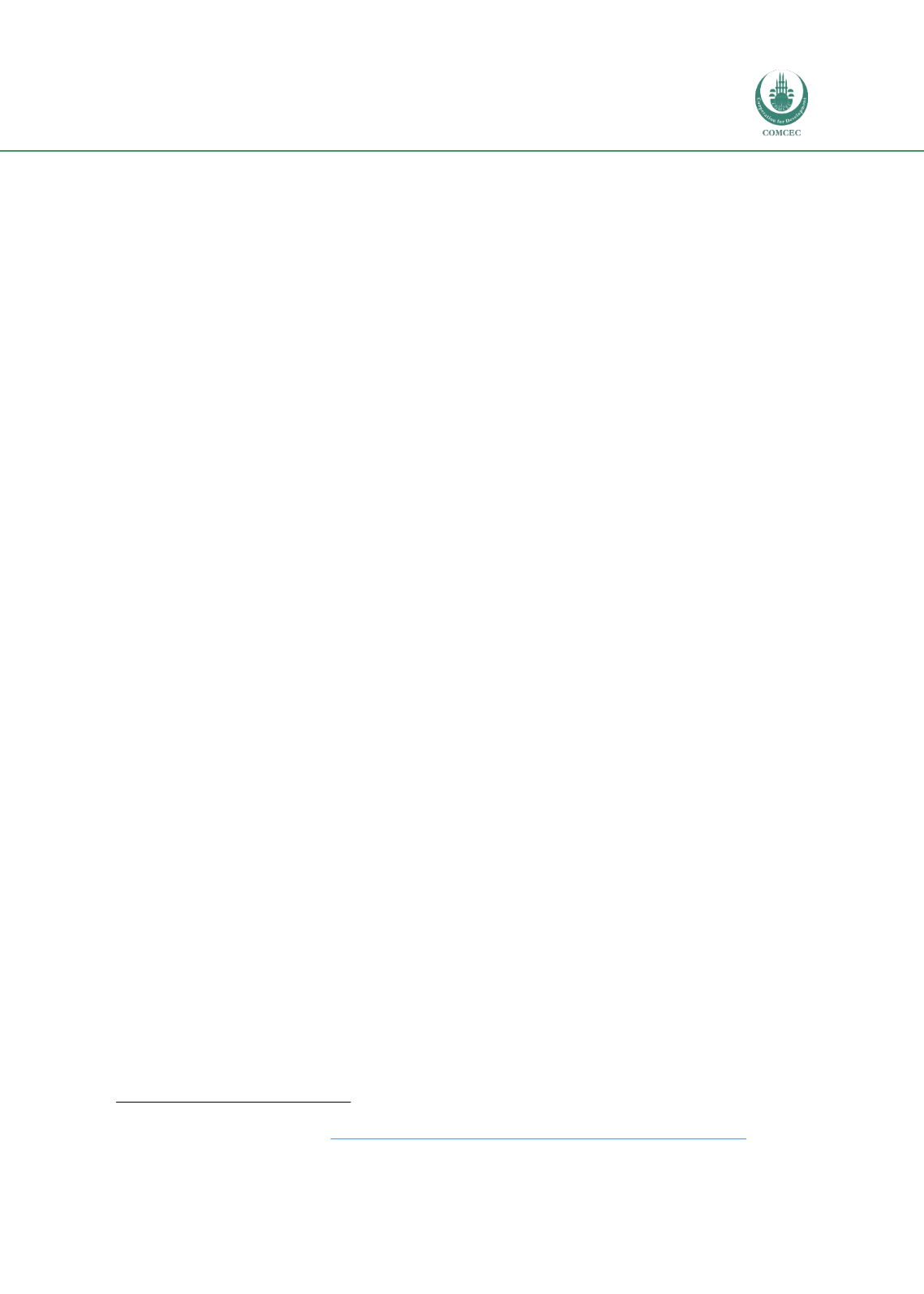

Improving Agricultural Market Performance:
Creation and Development of Market Institutions
71
procedures for live animals and products to the country and other official controls and
sanctions.
3.3.1 Food Safety
Food safety regulation pertains to controls on the purity, freshness, and potential
contamination of food and other agricultural products. Some regulations can relate to the
maximum amount of time between when a product is produced or harvested, time in transit, in
storage, and on the market shelf before it is purchased. Still other food safety legislation and
regulation can pertain to the recordkeeping to ensure knowledge of what has happened to that
product throughout that journey, how the product has been stored and transported, under
what conditions, and that it has been protected from spoilage and contamination throughout
that journey.
As noted in the introduction to this Chapter, while most of the OIC Member Countries have
some form of food safety regulation and legislation in place, few if any have approached the
concept in a systematic or comprehensive way. As an example of a robust nation, Indonesia
has a food safety administrative model which is – to a large degree – modeled directly on the
WHO’s ideal model.
118
In this model, the National Food Safety Committee supervises research
and data, education, promotion of voluntary quality assurance, food control, and food safety
laws.
In addition to food safety, import/export, and other related concerns, the country also
provides explicit guidance on more market-focused issues such as copyright and trademark
protection. Administrative frameworks in the majority of the OIC Member Countries however
are somewhat more scattered, and are targeted to specific crops, activities, and/or labeling for
religious reasons.
Food safety regulation can also pertain to substances added to foods during growth,
processing, or packaging. These include but are not limited to:
Pesticides
Colorings
Flavorings
Preservatives
Other Contaminants
As noted earlier, larger, more developed and globally integrated nations such as Indonesia,
Pakistan, and Turkey approach food safety in a more comprehensive fashion. This is not the
case for all of the nations of the OIC, and in particular those of central Africa. Indeed, the WHO
in 2005 found that, “the food safety systems in most countries of the region are generally weak,
fragmented and not well coordinated; and thus are not effective enough to adequately protect
the health of consumers and to enhance the competitiveness of food exports. It is, however,
118
Ministry of Foreign Affairs, Republic of Indonesia (2017), Food Safety Standards In Major Export Markets: A Readymade
Guide For Agro Exporters, available a
t http://www.kemlu.go.id/kyiv/Documents/indonesia_food_regulations.pdf [accessed
May 2017].


















